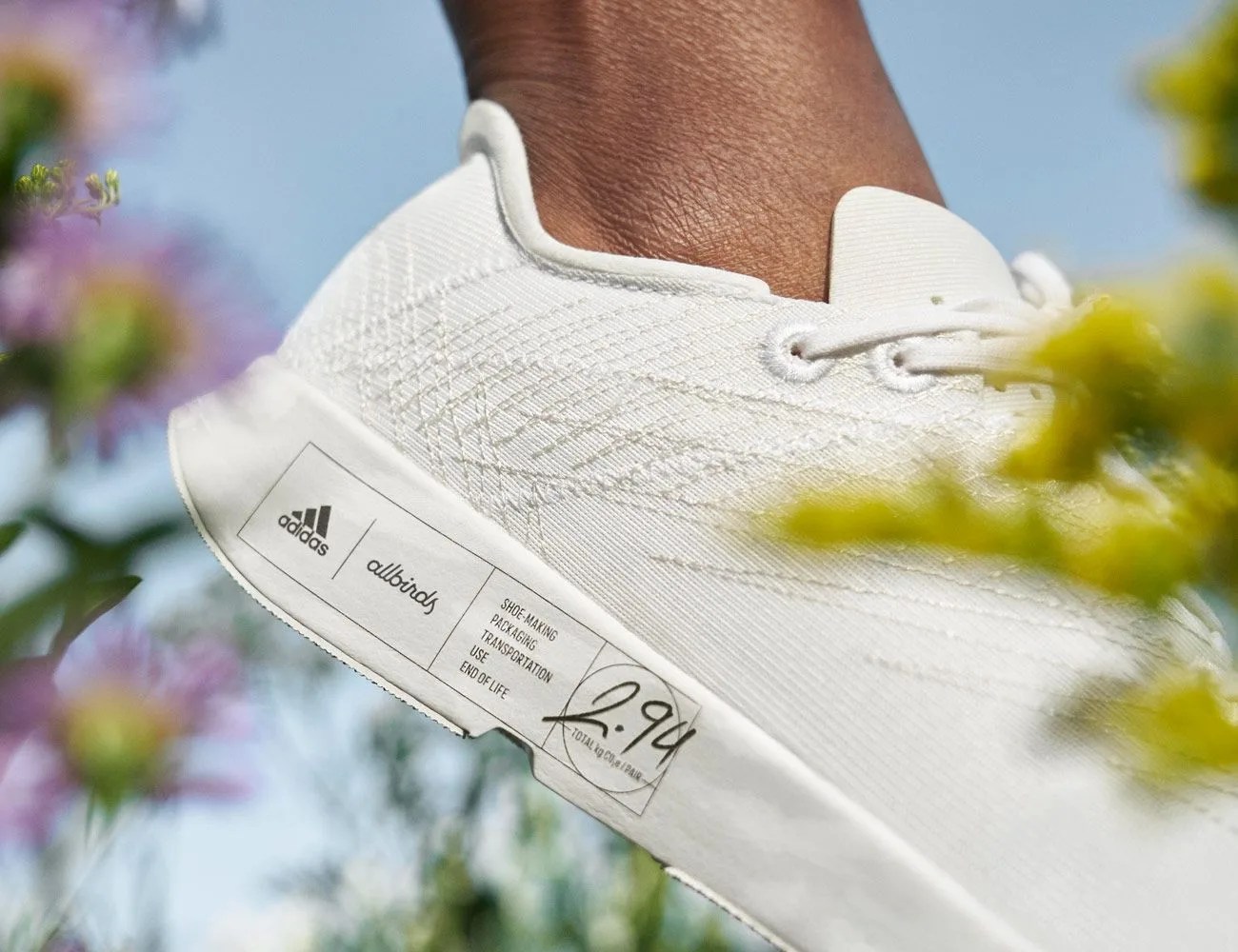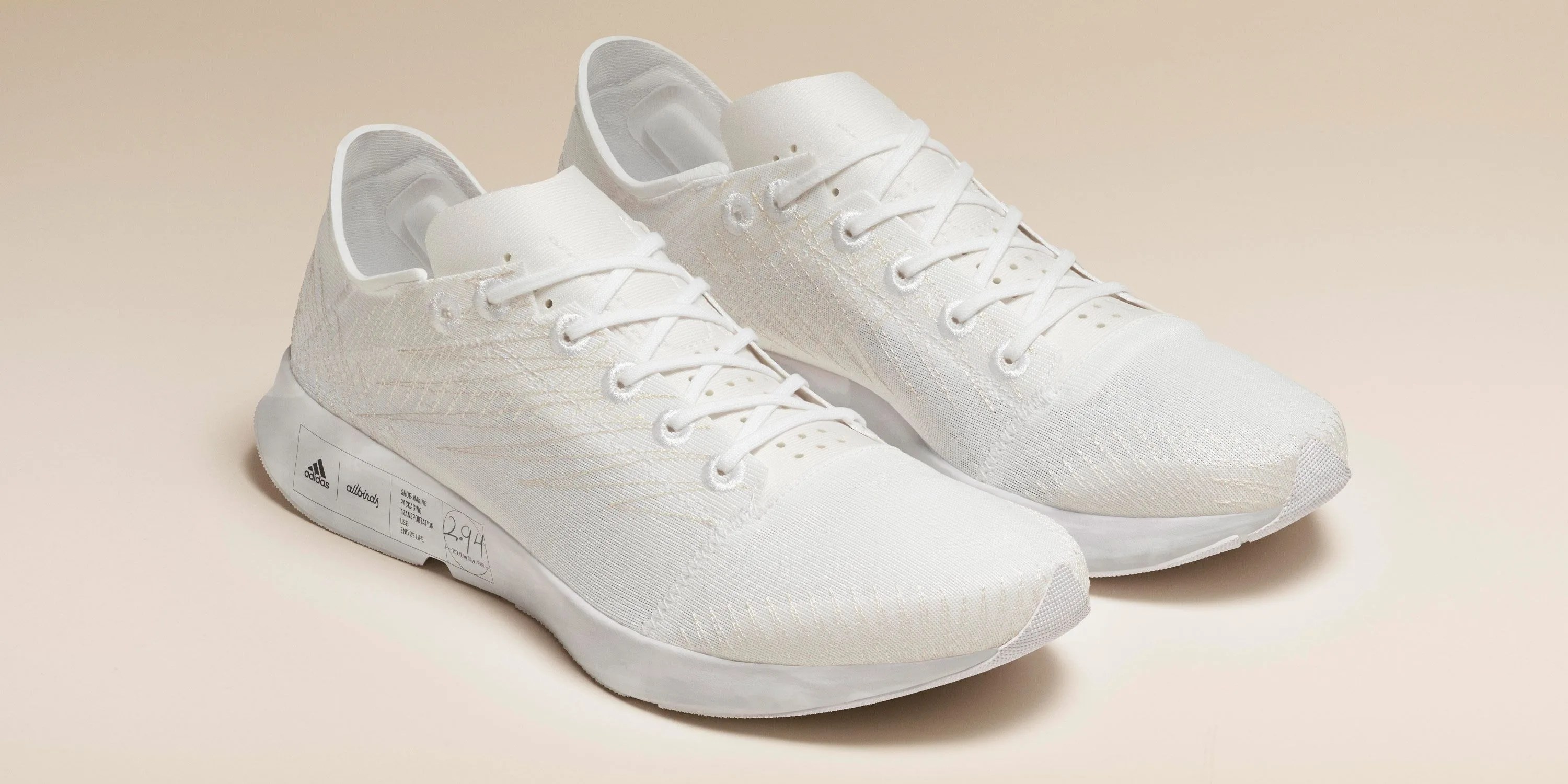News of a forthcoming adidas and Allbirds collaboration first broke mid-2020. The two set out to create a sport shoe with the slightest carbon footprint yet. Together, they planned to assess their own emissions, improve their manufacturing systems, develop new materials and establish a standard, albeit a formula, for other companies to follow.
At inception, the collaboration had a clearcut end goal — to release a co-branded sneaker — but it also aimed to impact the industry at large. For context, most sneakers have a carbon footprint of about 13.6 kg. adidas reveals most of their sneakers’ numbers are slightly lower (10-15 kg), and Allbirds’ are even less (~7 kg). By establishing entirely new means for making shoes, both parties promised a sneaker with the lowest-ever carbon output — and they’ve delivered. In 2020, Carnes told Vogue that “getting to two kilograms is like running a two-minute mile. It seems impossible, but that’s what gets us excited.” Officially, the adidas and Allbirds FUTURECRAFT.FOOTPRINT sneaker boasts a total footprint of just 2.94kg CO2e and it can be created with 63 percent less carbon emissions (when compared to one of adidas’ most popular styles).
 Courtesy
CourtesyAs promised, the all-new sneakers meets these metrics without sacrificing performance. Months of wear-testing confirmed each iteration’s durability and design tweaks aplenty helped the shoe reach its final form, which is happy marriage of both brands’ images. They’re not too tech startup starter kit nor are they just another adidas shoe. There’s a sugarcane-based SweetFoam midsole inspired by adidas Lightstrike design, an upper made from a mix of recycled polyester and Tencel (a fabric made from wood pulp) and a co-branded label near the heel that details the total footprint, the five pillars of the industry they innovated upon (shoe-making, packaging, transportation, use and end of life). To top it all off, the sneakers are sold in conical boxes that reduce total material use.
“With this project, less really was more. To keep minimalist not only in materials but also in construction, we went to extremes and left only what we really needed on the shoe to keep the performance properties,” Florence Rohart, Senior Footwear Designer at adidas, says.
“Our partnership with Allbirds is a beacon of what can happen when competing brands from the same industry see the possibilities in coming together to design,” Brian Grevy, Executive Board Member Global Brands at adidas, says in a statement. “By truly co-creating and providing each other with open access to knowledge and resources – such as Allbirds’ knowledge of carbon calculation and experience with natural materials, and adidas’ capabilities in manufacturing and performance footwear – this is a call-to-action for other brands, and a milestone in the sports industry achieving carbon neutrality.”

